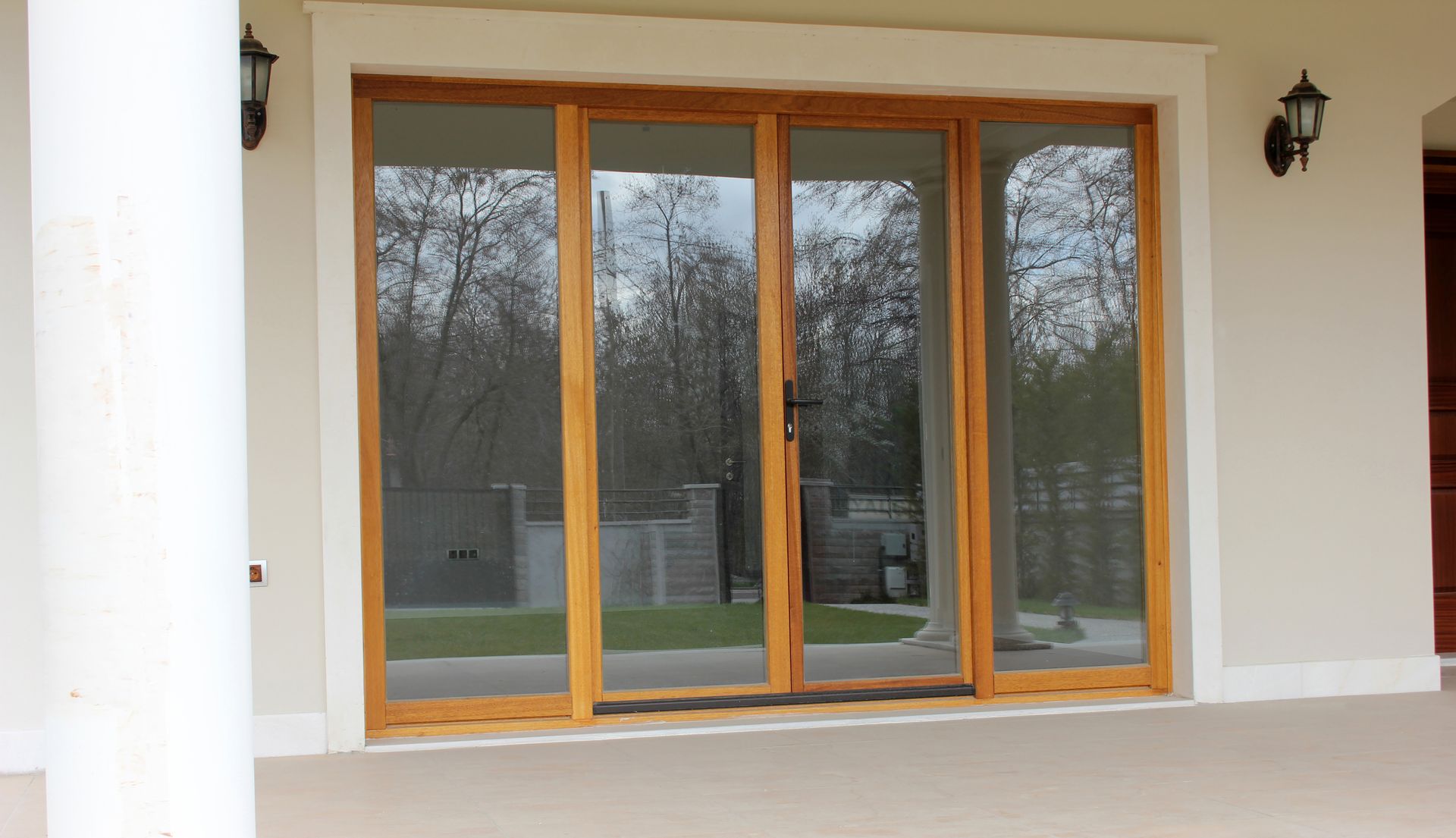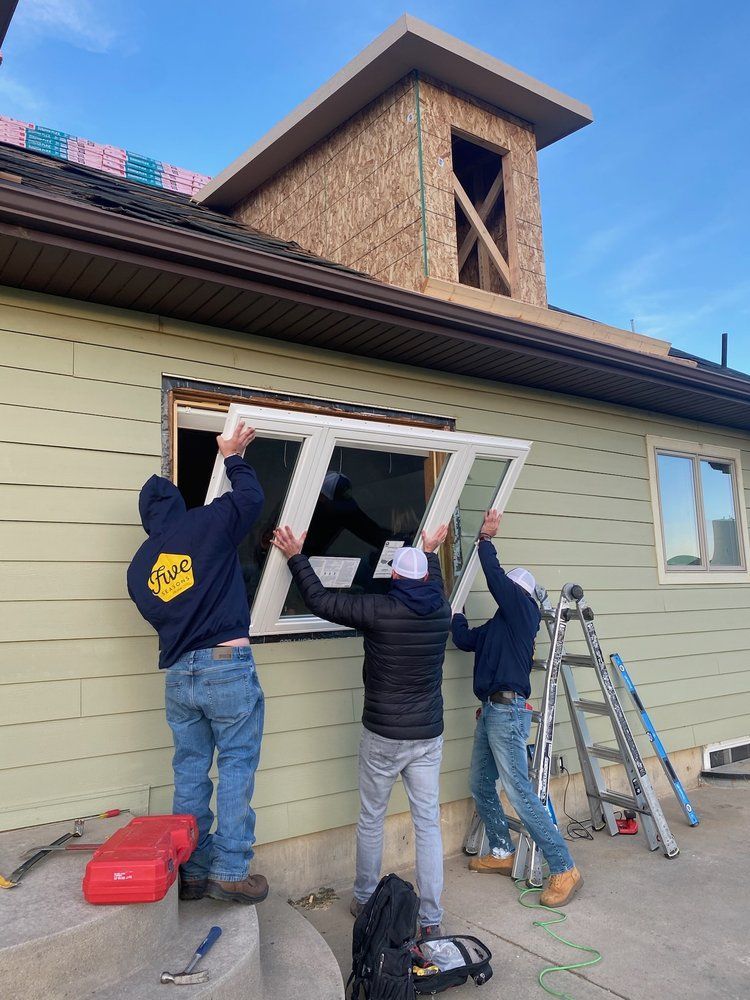The best patio doors for cold climates are sliding or hinged models with triple-pane glass, Low-E coatings, gas-filled chambers, and insulated frames like fiberglass or high-quality vinyl. These features work together to minimize heat loss, prevent drafts, and maintain indoor comfort even in freezing temperatures and high-wind zones. Studies from the U.S. Department of Energy show that upgrading to energy-efficient patio doors with insulated glass and sealed frames can reduce heat loss by up to 30%—a crucial factor in homes located in cold, high-altitude climates like Colorado.
Patio doors for cold climates must do more than look good—they need to insulate, seal out drafts, and resist damage from freezing temperatures and moisture. The best options combine energy-efficient glass, insulated frames, and tight weatherstripping to protect your home’s comfort and reduce heating loss during long winters. According to U.S. Department of Energy studies, poorly sealed doors and windows can account for up to 30% of home energy waste—making proper patio door selection critical in cold-weather regions.
What Makes a Patio Door Cold-Climate Ready?
Not all patio doors are built to handle harsh winters. A cold-climate-ready patio door incorporates specific features designed to combat air infiltration and heat loss, such as:
●
Insulated glass (double or triple-pane with argon or krypton gas)
●
Thermally broken frames that block conductive heat loss
●
Low-E coatings to reflect indoor heat back into the home
●
Tight weatherstripping and compression seals to reduce drafts
When these components work together, your patio door becomes part of your home’s thermal defense—not a weak spot.
For a deeper look at how insulated exterior doors protect against drafts and extreme weather,
read our guide on why insulated entry doors are a smart choice for Colorado homes.

Top Patio Door Styles That Work in Cold Climates
● Sliding doors: Modern insulated sliding doors feature thermally broken frames, multi-point locks, and reinforced track seals.
● French doors:
Hinged French doors provide elegant design with strong compression seals for tight closure.
● Gliding multi-panel doors:
Great for large openings; when equipped with energy-efficient glass and seals, they can insulate just as effectively.
Your choice of style should balance aesthetics, space, and sealing capabilities.
Best Frame Materials for Cold Weather Performance
● Fiberglass: Durable, low-expansion, and naturally insulating. Performs consistently through freeze-thaw cycles.
● Vinyl: Affordable and effective, especially with multi-chambered construction and welded corners.
● Wood-clad: Combines the beauty of natural wood indoors with an energy-efficient exterior shell.
● Aluminum (with thermal breaks) : Modern and sleek, suitable for cold climates when designed with internal insulation layers.
Glass Options That Keep the Cold Out
●
Triple-pane glass: Reduces heat transfer and interior condensation; best for very cold climates.
●
Argon or krypton gas fills: Fill the space between glass panes to improve insulation.
●
Low-E coatings: Reflect heat back into the home while allowing natural light through.
● Warm-edge spacers: Help reduce edge-of-glass heat loss and minimize interior frost.
Installation Tips That Make or Break Efficiency
● Fill gaps with
insulating foam or backer rod during installation.
● Use
insulated thresholds and properly aligned tracks or sills.
● Apply
flashing and waterproof barriers to prevent moisture intrusion.
● Ensure the door is adjusted properly to lock tightly without warping or flexing.
Poor installation is a leading cause of drafts and heat loss—even with top-rated doors.
Patio Doors and Energy Efficiency Ratings
● U-Factor: Lower is better for cold climates; aim for 0.30 or below.
● Solar Heat Gain Coefficient (SHGC): Higher values can help in cold zones by capturing winter sunlight.
● NFRC labels: Provide a full view of a door’s performance, including insulation, air leakage, and light transmission.
These ratings help you compare options beyond appearance and price.
Design Considerations for Cold-Climate Homes
Modern patio doors can be stylish and functional:
● Use
triple-pane glass for panoramic views with high insulation.
● Match door frames to your home’s architectural style using
fiberglass, vinyl, or wood-grain finishes.
● Choose neutral or UV-resistant colors that withstand snow, wind, and bright sun over time.
How Patio Doors Affect Heating Bills and Comfort
Upgrading to an energy-efficient patio door:
● Reduces heat loss by 10–30%
● Eliminates drafts and cold spots near large openings
● Improves indoor comfort, especially in rooms with a lot of glass
● Reduces how often your heating system runs—lowering utility bills
It’s one of the most visible and functional upgrades you can make for winter comfort.
Common Mistakes to Avoid When Choosing Cold-Weather Patio Doors
● Using single-pane or outdated glass technology
● Overlooking frame insulation or choosing low-grade vinyl/aluminum
● Skipping Low-E or gas-filled glass packages
● DIY installs without sealing or flashing experience
Avoiding these missteps can be the difference between a comfortable living space and a constant source of drafts.

People Also Ask About Patio Doors for Cold Climates
Are sliding glass doors good for cold climates?
Yes—modern sliding glass doors can perform very well in cold climates, provided they are designed with thermal efficiency in mind. Look for models with multi-pane glass, insulated frames, and reinforced weather seals along the tracks. Older sliding doors are often drafty, but newer designs use compression seals and energy-efficient glass packages to eliminate cold air infiltration. A well-installed sliding door can insulate nearly as effectively as a high-performance window.
Is triple-pane glass worth it for patio doors in winter?
In cold and high-elevation regions, triple-pane glass is often worth the investment. It adds an additional layer of insulation, reduces condensation, and minimizes heat loss through the large surface area of a patio door. Homes in places with long winters, high winds, or consistently
freezing temperatures benefit the most. The extra glass layer and gas fill create a buffer that stabilizes interior comfort near large glass openings.
Which patio door material is most energy efficient for winter?
Fiberglass and high-quality vinyl are the most energy-efficient materials for patio doors in winter. Fiberglass is extremely stable and naturally insulative, making it ideal for resisting cold weather expansion and contraction. Vinyl is also effective if the door uses multi-chambered construction and welded seams. Wood-clad frames can be efficient too, as long as the exterior is protected and the door includes proper sealing technology.
Can patio doors be installed during winter months?
Yes, patio doors can be installed during winter with the right preparation. Professional installers typically minimize indoor exposure using temporary barriers and complete the job in stages to prevent major heat loss. While the process may take slightly longer due to sealant curing times and weather constraints, winter installation is feasible—and often necessary when upgrading drafty or damaged doors.
How do I prevent frost or condensation on patio doors in cold weather?
Condensation and frost form when warm interior air meets a cold surface. To prevent this:
● Choose patio doors with Low-E glass and gas fills
● Ensure proper air circulation near the door
● Use insulated curtains or shades at night
● Make sure humidity levels inside your home are properly managed (ideally below 40% in winter)
● Ensure airtight installation with insulated frames and thresholds
If frost appears between glass panes, that may indicate a failed seal and should be addressed with a replacement.
Our Take: When Cold-Weather Patio Doors Make the Most Sense
For Colorado homeowners or anyone living in colder climates, upgrading to an energy-efficient patio door isn’t just about comfort—it’s about performance, cost savings, and long-term peace of mind. If your current door lets in drafts, forms condensation, or feels cold to the touch in winter, it may be costing you more than you think.
We recommend selecting a cold-climate-ready patio door if:
● You live in a region with snowfall, sub-freezing temps, or strong winter winds
● Your home has older sliding doors or single-pane glass
● You’re planning a remodel and want to reduce energy costs and increase comfort
● You’re upgrading to improve resale value with energy-efficient features
With the right materials, insulation, and installation, your patio door can be just as weather-ready as any wall in your home.
Conclusion: Energy-Smart Comfort Starts at the Door
When chosen wisely, patio doors do more than open up to great views—they seal in warmth, block out winter air, and help create a quieter, more comfortable living space. Whether you choose sliding, French, or multi-panel styles, make sure the design is backed by strong thermal performance and proper installation.
In a cold climate, the right patio door is a long-term investment in comfort, beauty, and efficiency. When you're ready to find the right option for your home, the experts at Five Seasons are here to help you make a choice that works for your climate—and your lifestyle.
Get Started Today
Five Seasons Windows & Doors is Colorado’s top-rated local window company with 230+ 5-star reviews. We offer expert advice, no-pressure quotes, and flexible project options — including phased installs. Schedule your consult today.



